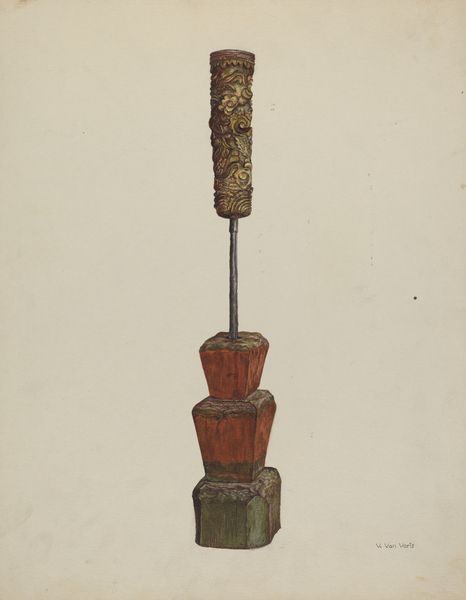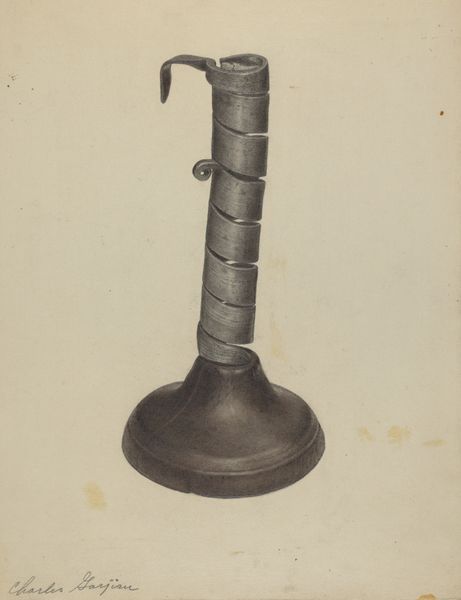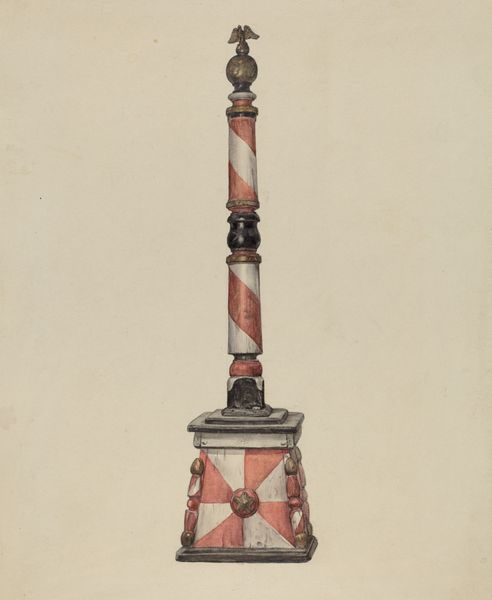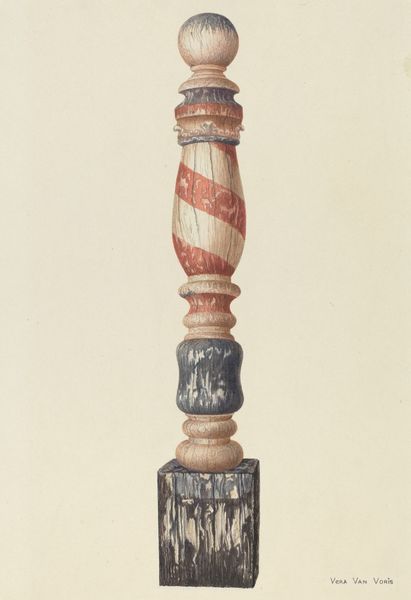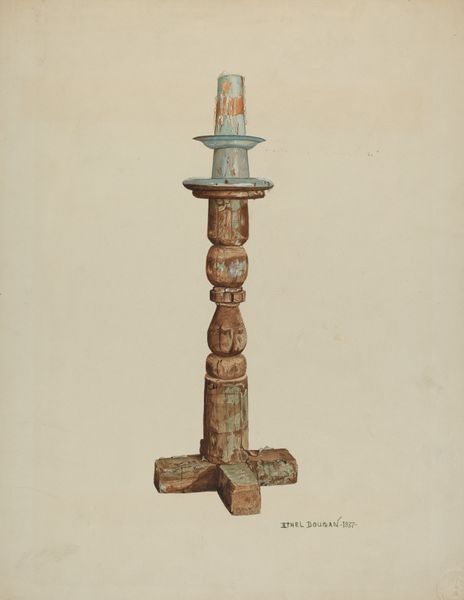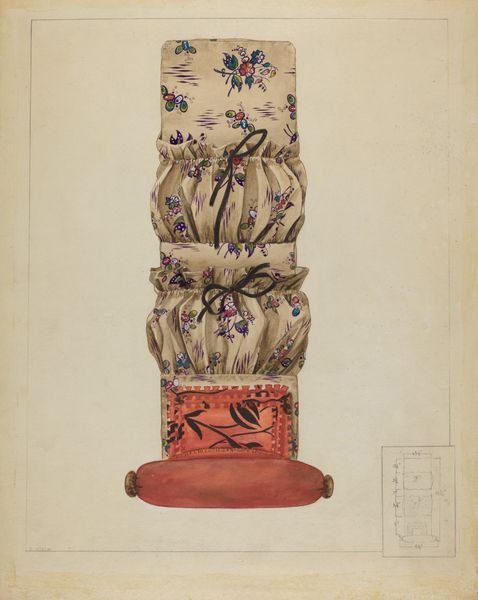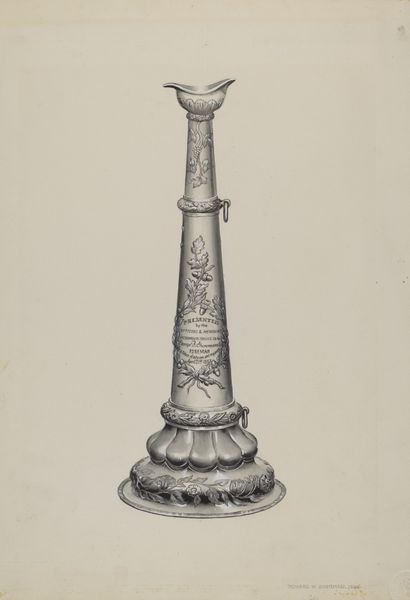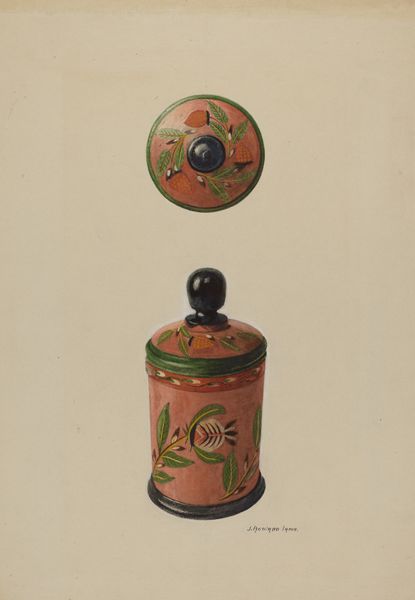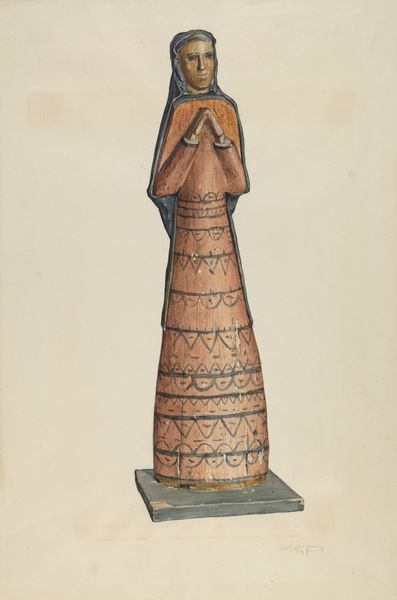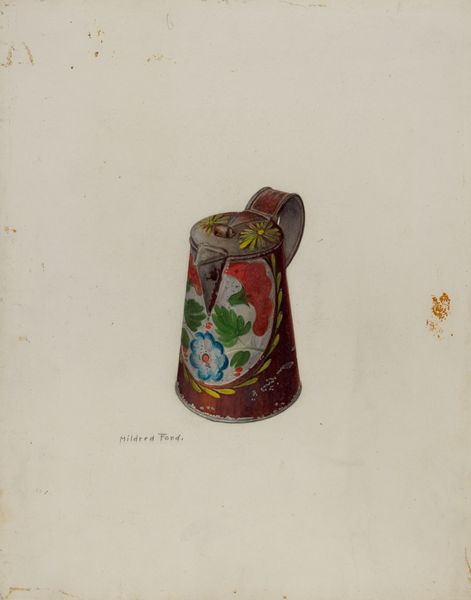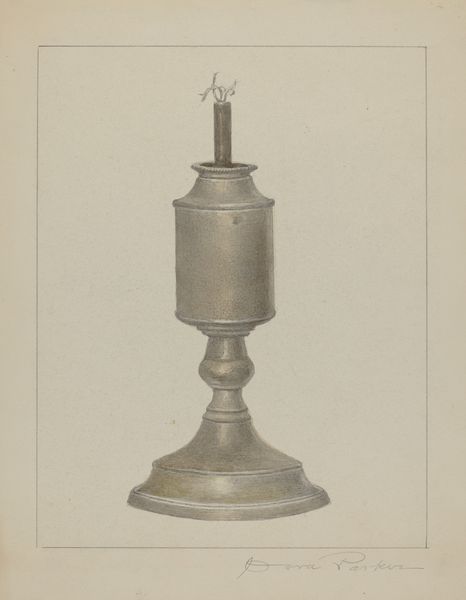
drawing, painting, watercolor
#
drawing
#
painting
#
watercolor
#
ceramic
#
decorative-art
#
realism
Dimensions: overall: 30.7 x 22.9 cm (12 1/16 x 9 in.)
Copyright: National Gallery of Art: CC0 1.0
Curator: This watercolor artwork by John Hall presents a "Toleware Candlestick," created sometime between 1935 and 1942. Its floral design strikes me immediately. Editor: There's something charmingly retro about it. It’s got this sort of quaint domesticity, evoking ideas of home life during that mid-century period. It's cozy. Curator: Right! "Toleware," that decorated tinware, was hugely popular, reflecting the intersection of utility and aesthetics. Its mass production made it affordable. Examining these everyday items lets us reconsider value in art. Editor: It definitely raises the question of value, especially as it intersects with gendered labor. How many women, perhaps overlooked, dedicated their time to these domestic crafts, decorating practical objects, yet weren't considered "artists" in the same vein? And it hints at social gatherings, domestic spaces—how did light shape social relations back then? Curator: Exactly. Understanding its means of production shifts how we perceive its cultural worth. Furthermore, watercolor captures texture and form effectively. Look closely; you’ll appreciate his mastery of light and color, almost mimicking metallic surfaces! Editor: I see that now! And that contrast emphasizes the socioeconomic landscape of that time—labor-intensive versus machine-made goods and their availability depending on social class. Perhaps owning decorated wares symbolized aspiration for a burgeoning middle class. Curator: Fascinating. So, observing something simple, like this toleware candlestick, it unveils production methods, consumer culture—and then even opens the broader history of class. Editor: Precisely. And I leave considering how we might rewrite the narratives around such overlooked material artifacts to incorporate narratives of gender, class, and artistic expression.
Comments
No comments
Be the first to comment and join the conversation on the ultimate creative platform.

